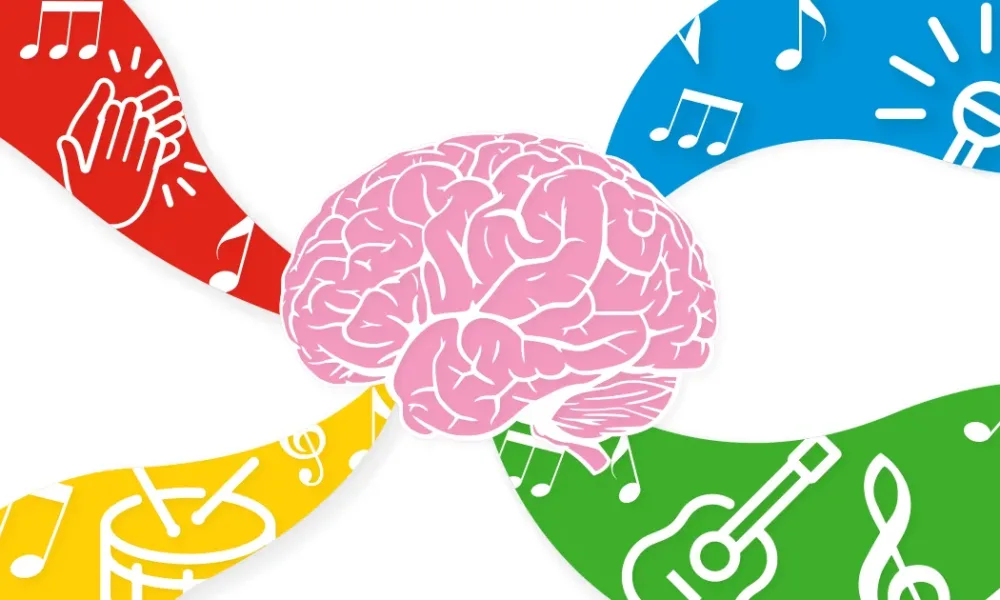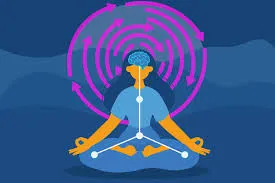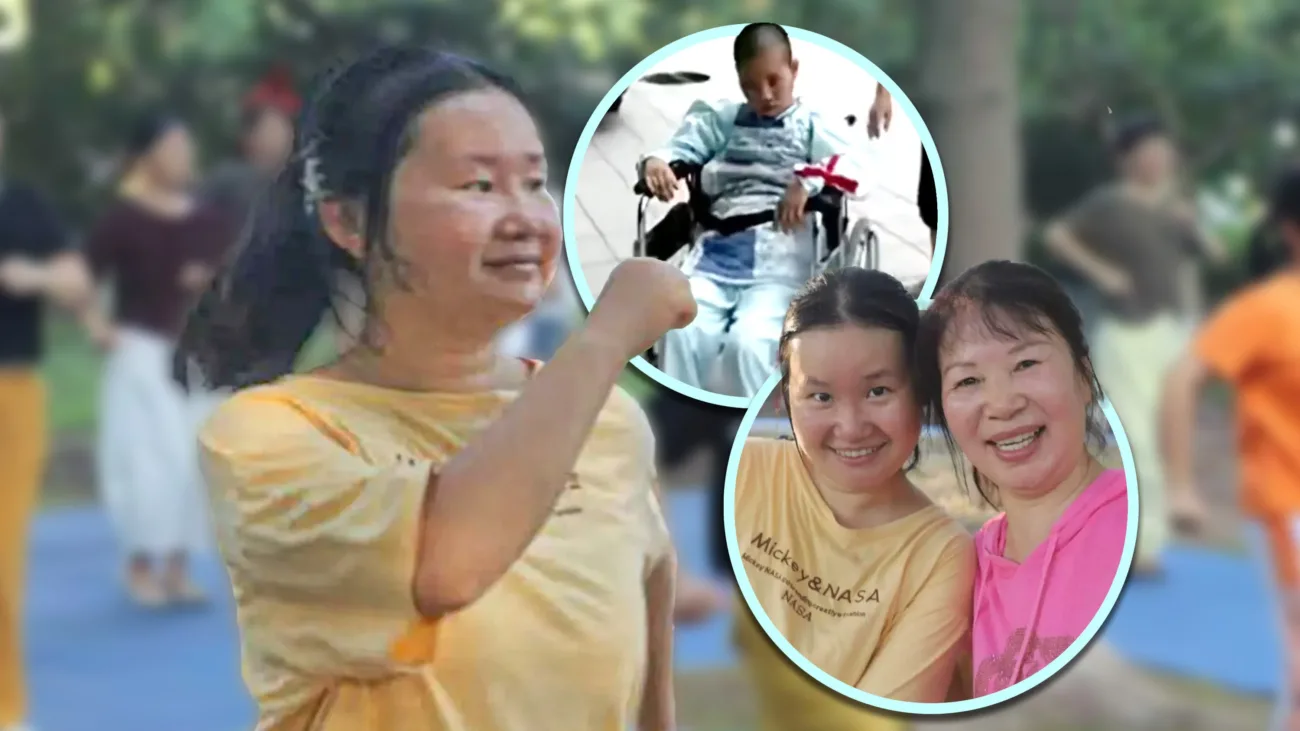In a small town in China, a mother began each morning the same way — by turning on her daughter’s favorite music, taking her hands, and moving gently to the rhythm. The room smelled faintly of antiseptic, the hum of hospital machines was ever-present, and her daughter lay motionless in her bed, lost in a coma that doctors said she would never awaken from. But every day, this mother danced — not for herself, but for the child who could not move.
This story, now known across the world, is more than a tale of medical recovery. It is a profound reminder that healing can take many forms — and that love, expressed through patience, touch, and rhythm, can awaken what science cannot always reach. Over the years, this mother’s dancing transformed despair into movement, silence into speech, and tragedy into triumph.
In this article, we’ll explore the incredible journey of this devoted mother and her daughter — and the deeper truths it reveals about the human spirit, the science of music and movement, and the limitless power of love.
Table of contents
- A Dance Born from Desperation
- The First Flicker of Life
- The Science Behind the Miracle
- The Long Road to Recovery
- The Emotional Architecture of Healing
- The Power of Movement and Music in Healing
- A Testament to the Human Spirit
- Love as the Most Powerful Medicine
- What We Can Learn from This Story
- Science Meets Soul: The Future of Healing
- A Legacy of Love and Movement
- A Universal Message
- Conclusion: The Dance of Life
A Dance Born from Desperation
When tragedy struck, everything changed in an instant. The daughter — a vibrant young woman full of dreams — suffered a traumatic brain injury that left her in a coma. Doctors offered little hope. The medical prognosis was grim: even if she survived, she might never regain consciousness or the ability to move or speak.
For many, that kind of news would mark the end of hope. But for this mother, it marked the beginning of a new kind of devotion. In the sterile hospital room, she decided she would not let silence win. She refused to let her daughter’s world shrink into stillness. So, she began to move.
At first, it was just small gestures — swaying gently, holding her daughter’s limp hands, playing songs that once filled their home. Friends thought she was clinging to false hope. Nurses pitied her. But she continued. The dance became her language, her prayer, her ritual of resistance.
And slowly, ever so slowly, something began to change.
The First Flicker of Life
It didn’t happen overnight. There were no sudden miracles — only endless days of repetition. She danced for weeks, months, even years. Through tears, through exhaustion, through loneliness. Yet one morning, as she held her daughter’s hand, she felt the faintest twitch. It was almost imperceptible — a small squeeze, like a whisper through the body.
- For the mother, that small movement was everything. It was proof that her daughter was still there, somewhere deep inside, reaching back. From that moment, she doubled her efforts. She began to incorporate rhythmic patterns, familiar melodies, and gentle exercises into their daily routine.
- Music therapy and movement therapy, though rarely used in traditional medicine at that time, became her lifeline. She didn’t know the scientific terms — she only knew that music had once made her daughter smile, and that love demanded she keep trying.
- Gradually, her daughter’s responses grew stronger. Fingers twitched. Eyes fluttered. Muscles that had been still for years began to remember motion. The human brain, as science tells us, is remarkably adaptive — capable of rewiring itself even after injury. What this mother was unknowingly doing was stimulating her daughter’s neural pathways through consistent sensory engagement.
It was love — but it was also, in a sense, therapy.
The Science Behind the Miracle
To the outside world, this recovery may have seemed magical. But neuroscience has long supported the idea that movement and music can awaken dormant parts of the brain.
Studies in neurorehabilitation have shown that rhythmic auditory stimulation — such as dancing or moving in time with music — can help reestablish neural connections between the brain and body. When rhythm and movement are combined, they activate multiple regions of the brain, including those responsible for coordination, emotion, and memory.
Music, particularly familiar tunes, can trigger emotional and cognitive responses in patients even when other forms of communication fail. The rhythm acts as a bridge, reconnecting the body to its internal sense of timing and awareness.
In this mother’s case, every dance session was like a gentle reboot for her daughter’s brain. Each sway, each song, each touch was a signal — a reminder of the body’s capacity to feel, respond, and move again.
But beyond the science, there was something even more powerful at play: emotional connection. The mother’s voice, her warmth, her unwavering presence — all of these provided a sense of safety and belonging, essential elements for healing in any form.
Her love became medicine. Her persistence became therapy.
The Long Road to Recovery
- Recovery wasn’t quick or easy. It took years of dedication, and countless moments of heartbreak. There were days when progress seemed to vanish, when exhaustion took over, when hope felt thin. But the mother refused to stop.
- She made dancing their daily ritual — morning and evening, for hours on end. When her daughter’s muscles began to stiffen, she massaged them. When she showed signs of awareness, the mother played her favorite songs louder, sang along, and encouraged every small response.
- As months turned into years, the progress became undeniable. The young woman began to open her eyes more often. She could follow movement. She began to form sounds. Then, one miraculous day, she uttered a word. Later, she stood — first with help, then on her own.
- The hospital staff, once skeptical, began documenting her progress with astonishment. Visitors would often find the mother and daughter moving together in slow, graceful patterns — not quite dancing as before, but undeniably alive, sharing rhythm and joy once again.
- Their journey became a beacon of hope, spreading through social media, touching hearts across China and beyond. For many who saw the story, it was more than a medical triumph — it was a lesson in faith, endurance, and the power of never giving up.
The Emotional Architecture of Healing
The human body has an incredible ability to heal, but the process is not purely physical. Emotional energy — love, hope, connection — plays a profound role.
Researchers studying psychosomatic recovery have observed that emotional connection can alter biological responses. Feelings of love and safety release oxytocin, dopamine, and endorphins — hormones that not only uplift mood but also reduce inflammation, regulate stress hormones, and improve cellular repair.
When we are loved, our bodies listen. When we feel safe, our cells respond.
In this story, the daughter’s healing wasn’t just the result of external therapy — it was the product of deep emotional alignment. Her mother’s faith provided a continuous current of positive reinforcement. Every dance, every song, every whispered encouragement sent a signal to her subconscious: You are alive. You are loved. Come back to me.
This emotional resonance helped sustain both of them through years of uncertainty. The mother’s consistency became her daughter’s anchor. And in that bond — a mixture of science and spirit — the miracle unfolded.
The Power of Movement and Music in Healing
The healing potential of dance and music is not new. Ancient cultures have long used rhythmic movement as a form of medicine. Shamans, monks, and healers across the world have understood that the body and spirit are deeply interconnected — that rhythm can realign energy, and movement can restore balance.

In modern times, therapies like Dance Movement Therapy (DMT) and Music Therapy are increasingly recognized for their ability to treat neurological and psychological conditions. They engage both hemispheres of the brain, enhance coordination, and improve mood.
Patients with Parkinson’s disease, Alzheimer’s, stroke, and even trauma have shown significant improvement through movement-based therapy. The mother in this story may not have had formal training in any of these fields — but her instincts, rooted in love, mirrored the principles that therapists use today.
Through music and motion, she reconnected her daughter’s body to her sense of self. Through rhythm, she gave her back the language of life.
A Testament to the Human Spirit
- This story stands as one of the most moving examples of human resilience in recent years. It reminds us that healing is not linear, and miracles often come disguised as persistence.
- The mother’s journey is a lesson in active hope — the kind of hope that doesn’t simply wait for good things to happen but participates in their creation. Her daily dances were acts of faith, small yet powerful gestures that built a bridge between despair and possibility.
- In an age where we often measure progress through speed and technology, this story takes us back to the essence of what makes us human: connection, patience, love, and movement. It invites us to ask — what if healing doesn’t just happen in hospitals, but also in hearts?
Love as the Most Powerful Medicine
Medical experts who reviewed the case later acknowledged that while therapy and care were essential, the mother’s love played an undeniable role. It sustained her daughter emotionally and physiologically.
When caregivers maintain strong emotional bonds with patients, recovery outcomes tend to improve significantly. Love motivates consistency, and consistency creates neurological repetition — a key element in rehabilitation.
In a very real sense, love reshapes the brain. MRI studies have shown that emotional attachment activates the brain’s reward circuitry, encouraging neuroplastic changes — the same mechanisms needed for recovery after injury.
This mother’s daily dancing did exactly that: it offered emotional reinforcement through movement, which in turn triggered biological healing. Her love literally rewired her daughter’s brain.
What We Can Learn from This Story
While not everyone faces such extreme circumstances, this story carries universal lessons for all of us — about resilience, presence, and the quiet power of faith.

- Consistency is Healing — Small daily actions, repeated over time, can transform even the bleakest situations.
- Love Needs Expression — Sometimes healing happens not through words, but through presence and touch.
- Movement Connects Mind and Body — Whether it’s dancing, walking, or stretching, physical movement helps emotional recovery.
- Hope Is an Active Force — True hope isn’t passive. It’s built through daily acts of belief, even when results are invisible.
- We Are Wired for Connection — The body responds to love. It’s not just emotional — it’s physiological.
These truths apply not just in hospitals but in everyday life — in how we care for others, and how we nurture ourselves.
Science Meets Soul: The Future of Healing
As the lines between science and emotional intelligence blur, stories like this one push the boundaries of what medicine considers “possible.” Hospitals around the world are beginning to integrate holistic therapies — including art, dance, and music — into rehabilitation programs.
Research into neuroplasticity confirms what this mother intuitively knew: the brain is not fixed. It is capable of constant growth and renewal. And when love and creativity are added to the equation, recovery becomes not just likely, but deeply human.
This shift toward integrative care represents a future where healing isn’t limited to medicine alone but includes every dimension of what it means to be alive — movement, rhythm, emotion, and connection.
A Legacy of Love and Movement
- Today, the daughter continues to improve. While her full recovery took years, she now walks, speaks, and even dances again — often side by side with her mother. Videos of their shared moments have inspired millions, showing them laughing, holding hands, and moving together in perfect rhythm.
- For those who once called the mother’s efforts “futile,” the transformation is proof that hope is never wasted.
- Her legacy is now more than her daughter’s recovery — it’s the message she has given the world: that no act of love is ever too small, no moment of care ever meaningless. Even when the world says “impossible,” love whispers, “Try again.”
A Universal Message
This story transcends culture, geography, and circumstance. It speaks to anyone who has ever faced despair, who has ever been told to give up, or who has loved someone through pain.
It reminds us that sometimes, the most powerful tools we have are the simplest ones — a song, a hand to hold, a rhythm to move to.
In a world often dominated by speed and logic, this mother’s quiet, graceful persistence stands as a counterpoint — a lesson in the slow, sacred art of healing.
Conclusion: The Dance of Life
The mother’s dance was never about perfection. It wasn’t choreographed, practiced, or planned. It was born from instinct — the instinct to love, to move, to keep believing.
Through that movement, she bridged the gap between science and spirit, between despair and renewal. Her story reminds us that we, too, have the power to create change — not just through grand gestures, but through small, consistent acts of love.
Healing, in its truest form, is not just the mending of the body but the awakening of the soul.
So, the next time life feels still, cold, or hopeless — remember the mother who danced in a hospital room, day after day, until her daughter opened her eyes. Remember that love moves mountains, and sometimes, it dances people back to life.
Stay Inspired on Your Healing & Hope Journey
If this story touched your heart and reminded you of love’s incredible power to heal, here are a few more stories that celebrate resilience, compassion, and the strength that blossoms through hope:
- Healing Through Action: A Family’s Legacy in Ocean Conservation – Discover how one family turned grief into a living mission to protect the planet.
- Mother-Daughter Duo Creates a Nature Lover’s Paradise – A family’s shared passion transforms a simple dream into a thriving sanctuary of joy.
- Once-Extinct Plant Found Growing Again in the Wild – Proof that life has a way of returning, even when all seems lost.
- The Beauty of Beginning Again: Finding Hope in Fresh Starts – Because healing often begins when we choose to start anew.
- Bradford Pennine Gateway Becomes New National Nature Reserve – A community’s effort shows how restoration — of nature and of spirit — is always possible.
